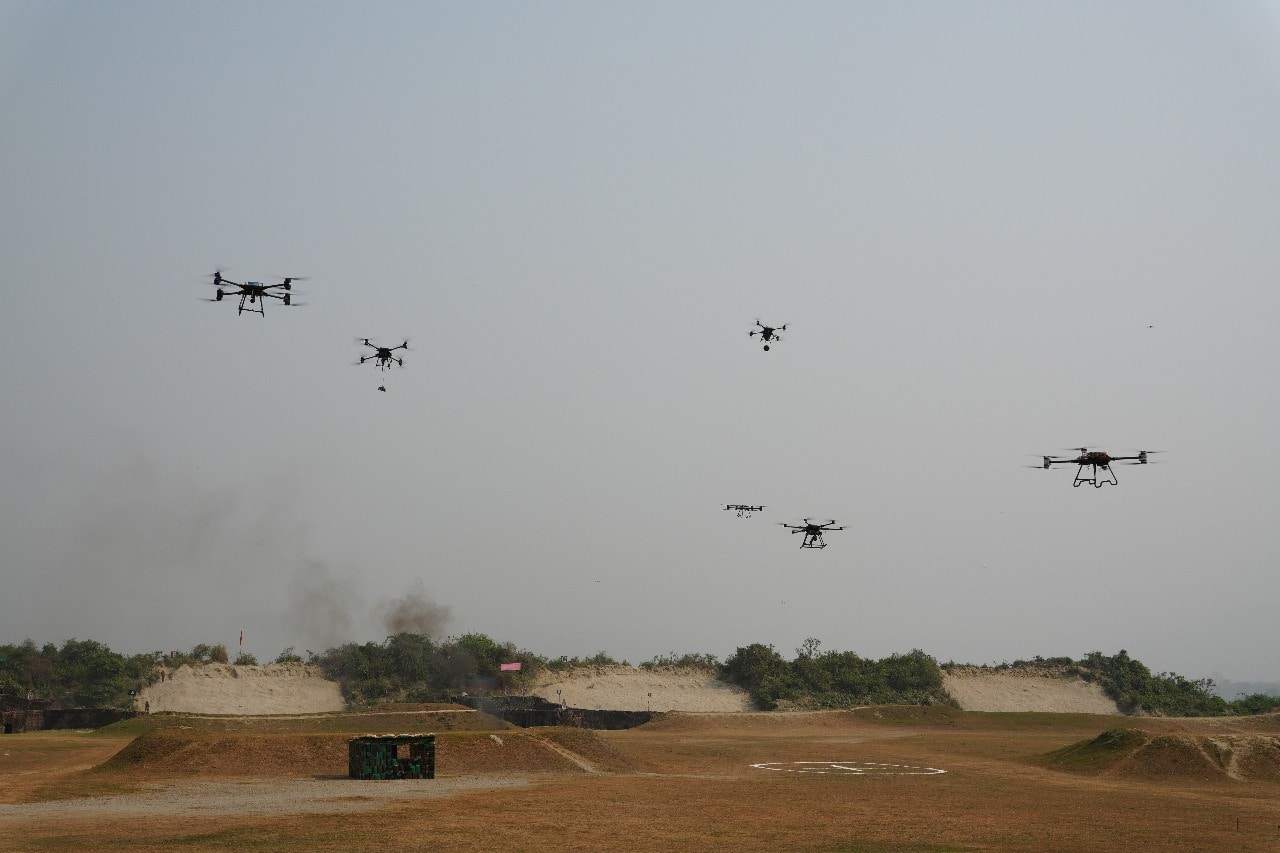The Indian Army's Para-Special Forces have long conducted operations with discretion and efficiency in the challenging terrains of Jammu and Kashmir and the dense forests of Northeast India.
Recently, these elite units have undergone significant technological and strategic upgrades to enhance their operational effectiveness in unconventional warfare scenarios.
Advanced Surveillance and Precision Strike CapabilitiesCentral to these upgrades is the integration of modern reconnaissance and strike technologies.
The Multi-Barrel Loitering Munition System (MBLM), often referred to as "kamikaze drones," provides real-time surveillance and accurate targeting capabilities deep within enemy-controlled areas.
These systems are deployable in numbers and significantly enhance the effectiveness of covert missions.
Additionally, the forces now employ advanced unmanned aerial vehicles, including nano drones and small surveillance helicopters equipped with Forward-Looking Infrared (FLIR) sensors.
These systems extend battlefield awareness up to 10 kilometres, aiding operatives in remaining concealed and effective.
Specialised weaponry has also been updated. Finnish Sako TRG-42 sniper rifles, effective at ranges exceeding 1,500 meters, offer precise long-range fire capabilities.

For covert, silent operations, the Russian-made suppressed VSS Vintorez sniper rifle has been adopted.
Moreover, Swedish Carl Gustaf M4 rocket launchers are now available for anti-armor missions.
Improved Stealth and Insertion TechniquesPara-Special Forces utilise India's Military Combat Parachute System (MCPS) to enhance insertion capabilities, successfully tested at operational altitudes of up to 27,000 feet.
This capability allows forces to be deployed beyond the detection range of enemy radar, offering significant strategic advantages in contested areas.
Rigorous Training and Realistic Simulation
The effectiveness of these technological advances depends significantly on training standards, which remain among the most rigorous worldwide.
Candidates undergo intense physical and psychological evaluations, reportedly with an attrition rate of approximately 70-80 per cent.
This shows just how much of the tip of the spear these elite operators are.
Recent additions, such as the vertical wind tunnel at India's Special Forces Training School in Himachal Pradesh, enable realistic training for combat free-fall operations. Furthermore, virtual and augmented reality simulators provide scenario-driven training, realistically replicating urban combat environments without compromising mission security.
Joint international exercises, such as "Khanjar-XII" with Kyrgyzstan's elite Scorpion Brigade and "Desert Hut 2025," emphasise skill enhancement and interoperability, particularly in mountainous and airborne operations.
Unified Command for Better CoordinationA key organisational development has been the formation of the Armed Forces Special Operations Division (AFSOD). This division consolidates approximately 3,000 elite personnel, primarily from the Para-Special Forces and select units, facilitating streamlined and rapid decision-making during complex, cross-border missions.
While plans for a comprehensive Special Operations Command remain under consideration, the existing AFSOD structure has significantly improved operational coherence.
Future Procurement and Indigenous InnovationLooking ahead, the Indian military aims to acquire advanced stealth technologies, including lightweight exoskeletons and equipment designed to minimise radar and thermal detection.
Investments in electronic warfare systems and AI-driven drone swarms for intelligence and combat roles are also key procurement goals. Collaboration with strategic partners such as Israel and the United States supports these efforts.
The Defence Research and Development Organisation (DRDO) spearheads India's push towards indigenous innovation, focusing on domestically developed parachute systems, stealth drones, and AI-enabled sensors.
Collaborations with India's growing startup ecosystem are pivotal in ensuring technological sovereignty.
Addressing Existing ChallengesDespite substantial progress, some challenges remain.
The increased weight and bulk of modern gear can hinder mobility, particularly in rugged terrains. Efforts are ongoing to develop lightweight yet resilient materials to overcome these limitations.
Procurement delays are being proactively addressed by streamlining direct government-to-government procurement and strengthening partnerships with indigenous firms.
Training infrastructure enhancements continue to receive priority, particularly expanding virtual reality training centres to simulate various operational environments, including mountainous terrains.
Through the careful integration of advanced technologies, rigorous training, structural improvements, and forward-looking procurement, these forces are well-positioned to meet evolving security threats effectively.
Maintaining this momentum will be crucial for India's strategic readiness in the coming years.
You may also like

Millions of workers to get pay rise this month - how to check you're getting right amount

Gladiator's Steel's wife gives birth at 23 weeks as he says baby is 'strong'

Mum hit with horror Turkey hospital bill after dislocating her neck in holiday freak 'accident'

Canada Parliament on lockdown with urgent warning to 'seek shelter' and 'hide'

Waqf Bill: Who's the 'girgit'? Lalu, Nitish parties slug it out







